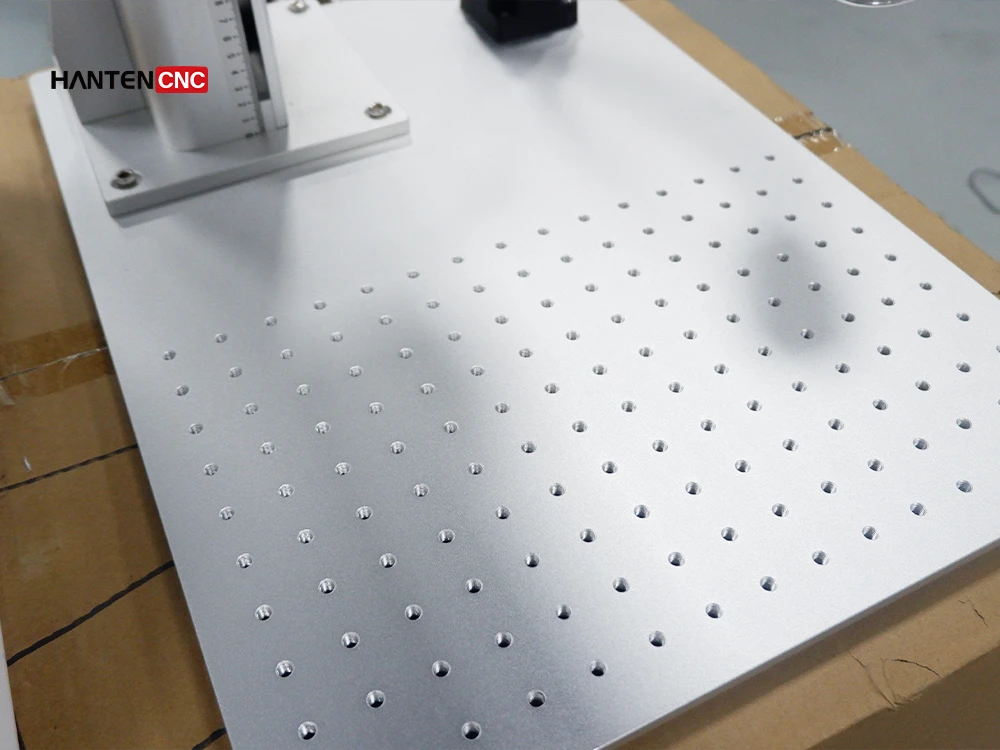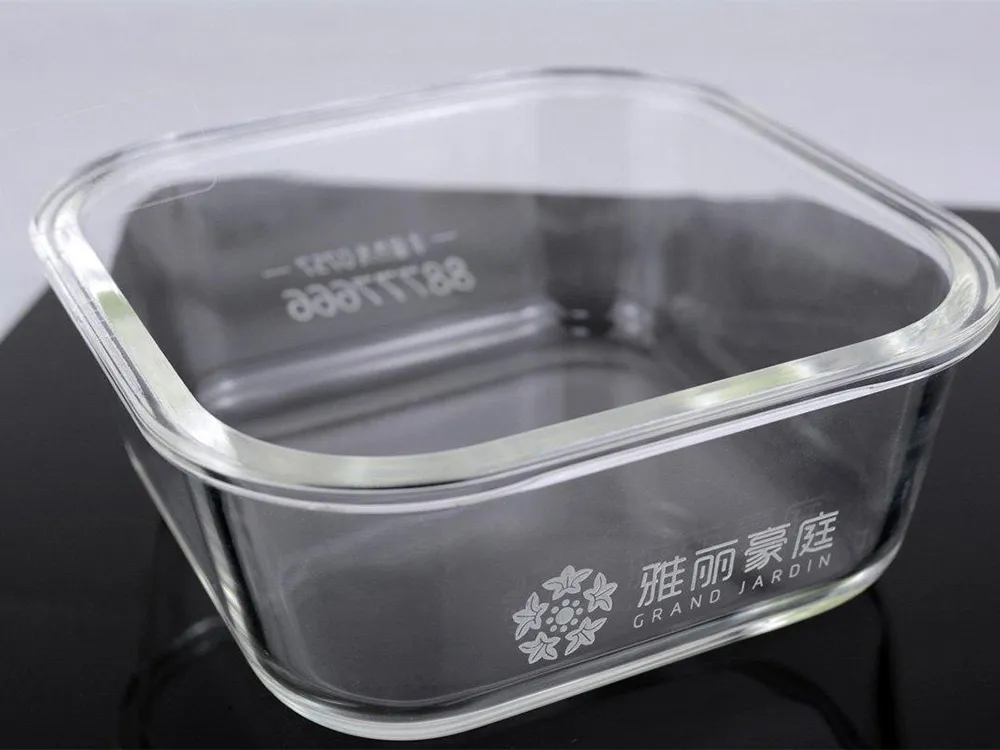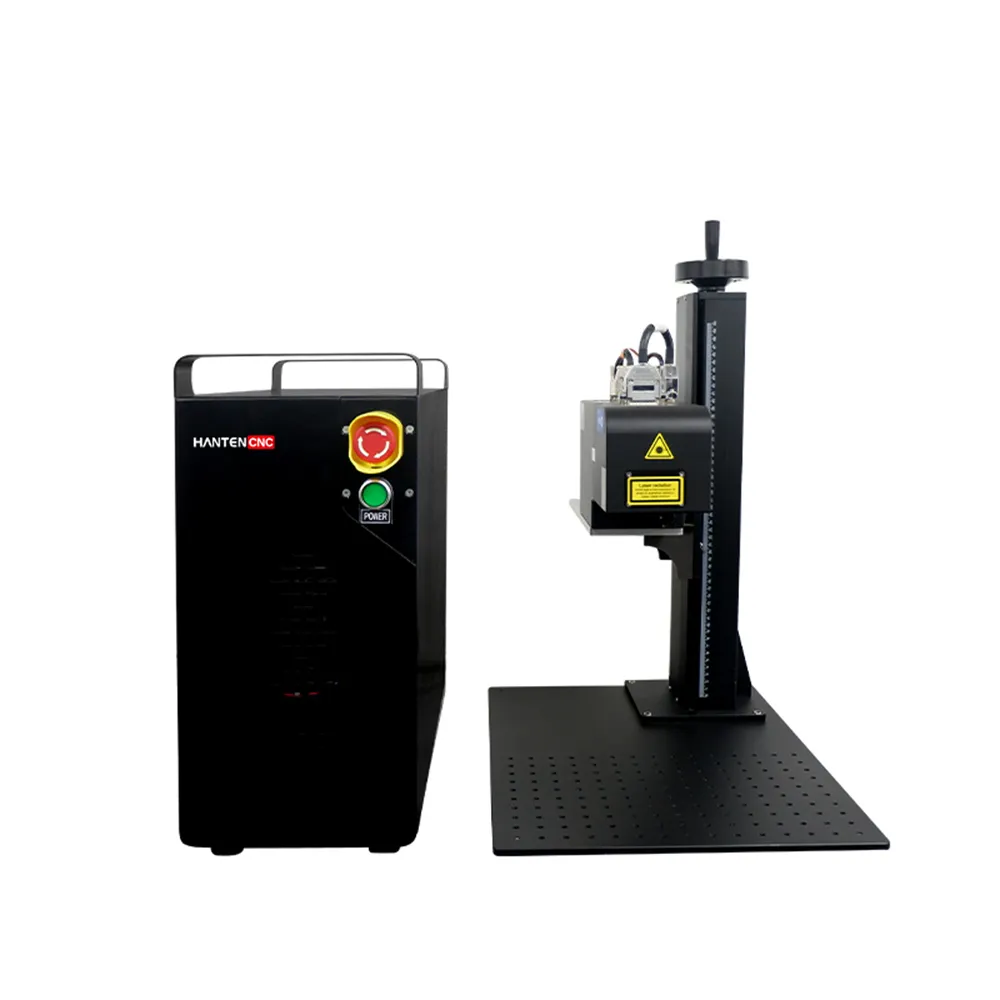Laser marking and inkjet printing are both famous for their various applications. Although their specific uses differ, they are both very popular. To understand how they differ, it is essential to grasp the core concept of each technology. This article, “Laser Marking vs Inkjet Printing,” will make that easier for you.
Laser marking utilizes a highly focused laser beam to engrave the surface of a material. Some laser marking processes don’t directly engrave. Instead, they change some properties on the material’s surface. For example, laser marking on plastic bottles and laser etching on glass are noteworthy. On the other hand, inkjet printing is the more traditional way of marking. It uses four colors, widely popular as CMYK, which stands for Cyan, Magenta, Yellow, and Black. Combining these four colors creates a wide range of colors and shades.
This article provides an in-depth explanation of these two technologies and their key differences. We hope that at the end of this article. You will be able to select the most suitable method for your project. You will understand their specific uses and learn how to improve your existing marking techniques. Let’s get started.
What is laser marking?
As the name suggests, this method uses a highly focused laser beam to create permanent marks. You can do this on a wide range of materials. These marks could be of various types. The four most common types are engraving, foaming, ablation, and coloration. Laser carbon migration and annealing are also noteworthy on this list. These techniques create high-contrast logos or marks that are typically not easy to remove.
All these techniques allow you to print your brand names, serial numbers, and barcodes on material. This way will help grow your company and make your product highly reliable to customers.
You may find it hard to choose between these laser marking methods. Note that the different engraving materials are the main cause of this diversity. For example, hard metals used in fiber lasers are cut with narrow laser wavelengths.
Fiber lasers are unsuitable for nonmetals, as CO2 and diode lasers employ larger wavelengths. Therefore, you must adequately assess which laser marking machine you are choosing.

Working Principle
The working principle of laser marking is relatively simple and easy to understand. Laser marking machinery instantly heats materials at a specific point when it focuses.
This rapid change in temperature heats the materials, causing them to vaporize. This process continues as the laser gun moves along a path. That’s how you might get clear and high-contrast laser engravings. The exact process could be observed for other laser marking processes.
This whole process is fully computer-controlled. You can monitor and change laser parameters to improve mark accuracy and efficiency.
As mentioned, laser marking can be of various types. The working principles of each method differ significantly. For example, etching removes material, while foaming forms bubbles beneath the surface. Annealing is ideal for metals, and engraving is best for woodwork. However, foaming and carbonization are popular in particular for plastics and wood.
What is inkjet printing?
As the name implies, this printing method uses ink. It is pretty popular for color printing. The best part of this method is that you can create a wide range of colors and shades with just four colors. People widely know this as CMYK, which stands for Cyan, Magenta, Yellow, and Black. The use of black typically creates a range of shades in your design.
There are two types of inkjet printing: thermal and Piezoelectric. These two methods have unique advantages and limitations. However, they can work well on paper, plastic, fabric, and other materials. Inkjet printing offers excellent image quality, is relatively fast, and is affordable.
Working principle
As you know, inkjet printing refills employ thermal or piezoelectric methods. Both are different, but the results are the same. The shell contains the color and makes it flow during printing.
A small heater heats the ink in thermal inkjet printing, causing it to flow through the nozzle. More ink is gathered into the chamber for the following cycle when the bubble collapses. On the other hand, piezoelectric inkjet printing uses a piezoelectric effect. Electric charges are applied to cause vibration to flow out of the ink. These processes ensure quick ink drying and produce sharp and clear prints.
Laser Marking VS Inkjet Printing: Which is Better?
In today’s world, all industries heavily depend on marketing. One critical way to market a product is to use permanent marks on the product itself. Both Laser Marking and Inkjet Printing are widely popular in this case.
To choose between these two technologies, you must consider a few factors. For example, what is your purpose? What kind of marks will you put on your products? Considering all these factors will lead to the final decision. Below are the key differences between Laser Marking and Inkjet Printing.
Laser Marking VS Inkjet Printing: Printing Capabilities
Laser marking and inkjet printing have different technology and material compatibilities.
Laser marking is a contactless working process. It uses a focused laser beam to create stable marks. Laser marking technology is famous for its versatile applications. The method uses various materials, including wood, leather, glass, ceramics, and fabrics. Also, it leaves durable marks on stainless steel, titanium, and anodized aluminum.

On the contrary, inkjet printing sprays ink onto surfaces for the work. With it, you can easily do high-resolution and colorful designs. Thus, inkjet printing is popular for documents, packaging, labels, photographs, and more. Moreover, you can use it on 3D objects, fabric, plastic, and a wide range of different materials. In short, inkjet printing can be your ideal companion if you’re seeking vibrant designs.
Both technologies are essential in modern industries. While inkjet printing gives flexibility and color, laser marking is durable. Lastly, the choice depends on your application, material, and long-term validation.
Laser Marking VS Inkjet Printing: Speed And Efficiency
Regarding speed and efficiency, laser marking is better than inkjet printing. Laser marking requires no ink, eliminating the hassle associated with the process. It’s a precise, high-speed automated technique.

Inkjet printers also deliver fast results when dealing with large print volumes. However, inkjet printing doesn’t cover the same portion as laser marking. Because of this, inkjet printing needs more time to complete marking. It becomes noticeable when you are handling a large volume of orders.
Laser Marking VS Inkjet Printing: How Long Do They Last
Laser marking creates deep marks that are resistant to scratching. Even under challenging circumstances, it lasts a considerable amount of time.

Inkjet printing, on the other hand, places ink on the surface. The ink may discolor over time due to exposure to light, water, or daily use.
Overall, inkjet printing is ideal for short-term use, and laser marking is for long-term use.
Laser Marking VS Inkjet Printing: Cost And Budget
Laser marking and inkjet printing have different price structures. Laser marking machines are costlier than inkjet printers. Despite its initial cost, mass production will pay you off. Also, it requires low maintenance costs.
Inkjet printers are less expensive. However, they require various inks to complete the process, which adds to the yearly cost. Moreover, maintenance costs can add extra amounts, including cleaning and replacing parts.
Where should you use laser marking technology?
Laser marking technology is a versatile method. As mentioned earlier, it is used to label and mark metals. It ensures a stable mark on materials for an extended period.
As the process doesn’t damage delicate items, it can be used in the electronics and tech industries. The jewelry and personalization industries also utilize it for design and branding purposes.
This technology has also contributed to the medical industry. It marks medical instruments, implants, and surgical equipment. It also enables aerospace and defense units to track their equipment through labels.
Its high speed, precision, and durability make it a popular choice for industrial use. Moreover, the process is reliable and cost-efficient.

Where should you use inkjet printing technology?
The inkjet printing method is also quite popular and has wide applications. They are famous for producing images of superior quality and vibrant color display. Also, it represents the product’s beauty and elegance. Inkjet printers’ ability to handle high-quality graphics images makes them popular.
This technology is evolving with the modern world. Inkjet printers are suitable for business printing, professional papers, textiles, and packaging. It would be a great economical choice for short-term use.
Summary
Now, you are familiar with all the information about both technologies. As you know, laser marking technology has impressed several industries. That’s why people widely use it to mark metals, wood, plastics, or even ceramic items. Some modern laser markers can also make color marks.
Additionally, inkjet printers are renowned for producing full-color, high-resolution prints. However, they are not as durable as laser markings.
Both methods serve different purposes and have distinct applications. Now, the choice depends on your requirements.
If you have any questions, please don’t hesitate to contact us at our customer service points. We always welcome your questions. You can also visit our products page to learn more about our laser markers.
